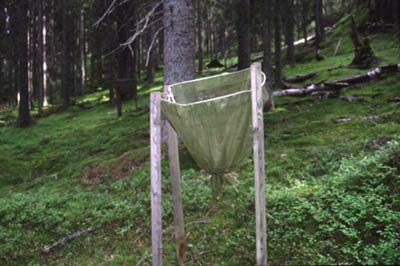
|
|
Aims
Monitoring the nutrient status of both living and dead needles provides a measure of the translocation in the trees. The amount of fallen litter is derived partly from deposition, partly from internal circulation. Nutrients in throughfall plus those in litterfall minus those in precipitation gives an approximation of the root uptake in trees. Litter traps consisting of net sacks mounted 0.5 m above ground stand in lines parallel with the throughfall gauges at the IM sites. All fine litter, such as needles, leaves, twigs, lichens, bark flakes are analyzed chemically. During autumn the needles are singled out for comparison with contents in living needles.
Variables
|
 |
|